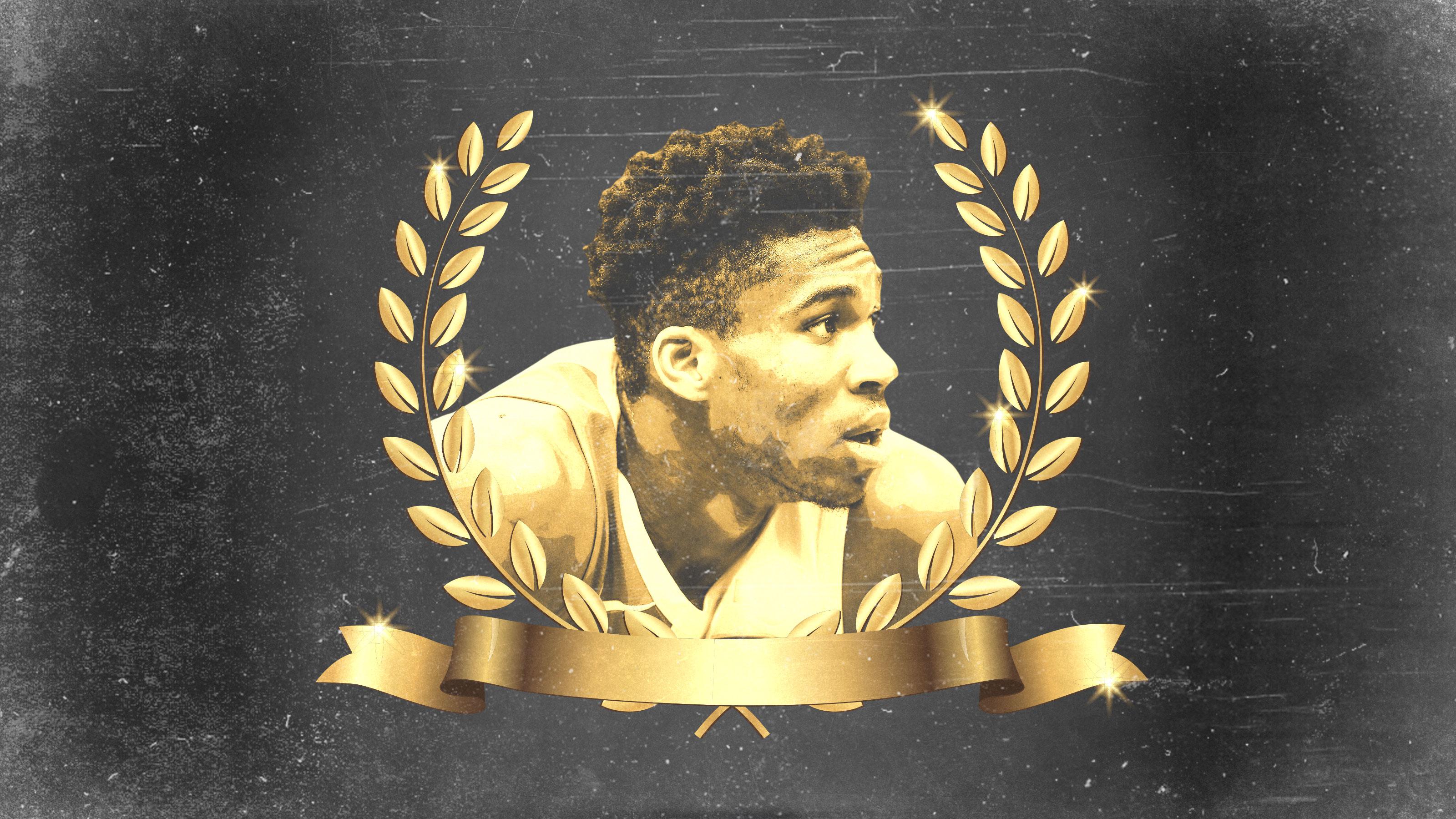The Big List of NBA Awards Picks
Awards season is here. We hand out hypothetical hardware for MVP, Rookie of the Year, and all of the other honors on the NBA’s official ballot.I don’t have an official ballot for the NBA’s year-end awards. This is probably for the best. I can only imagine how many blood vessels I’d burst if I knew my vote could impact actual real-world stuff like “whether or not another person can earn an additional $80 million.” (I am sort of like Chidi from The Good Place, except without being surprisingly swole and with only half as much Peeps chili.)
Instead, I will make my picks in the safe-mode sandbox of The Ringer, a great website/mirror dimension where the only consequences of my choices will come in the form of roasting from fans who feel their favorite players have received insufficient love and respect. Without further ado, let’s hand out some hypothetical hardware.
Most Valuable Player
1. Giannis Antetokounmpo, Bucks
2. James Harden, Rockets
3. Paul George, Thunder
4. Nikola Jokic, Nuggets
5. Damian Lillard, Trail Blazers
I don’t really think there’s a wrong answer in the Giannis-Harden debate, though I’d imagine Rockets fans will disagree with the one I’ve made.
The Houston superstar has been a singular sensation who put a scrambled and injured Rockets team on his back, had a historic two and a half months, and has arguably authored more jaw-dropping individual moments than Antetokounmpo over the course of this season. Producing the seventh-highest-scoring campaign in NBA history is staggering enough; doing it with a higher usage rate than any player save for MVP-season Russell Westbrook and with barely any drop-off in true shooting efficiency is almost literally unbelievable.
Harden has crumpled up what we thought we knew about the usage-efficiency curve, taken a side step, and deposited it into the nearest trash can. In the process, he has also created more points via assist than all but three other players and led the Rockets to the NBA’s best record and its top net rating since February 1. If he wins his second straight MVP award, it will be exceptionally well deserved. In the end, though, I chose Antetokounmpo.
Giannis, too, has also produced a historically rare season. He will join Peak Kareem Abdul-Jabbar as the only players in league history to average at least 27 points, 12 rebounds, five assists, and one blocked shot per game. (I wouldn’t bet on him racking up 14 dimes in Milwaukee’s regular-season finale against the Thunder on Wednesday, but if he did, he’d become the first player since Oscar Robertson in 1961-62 to average 27-12-6 for a full season.) He has dominated the highest-value area of the court unlike any other player in the sport. He is a young Shaq initiating from the perimeter, a 6-foot-11 young LeBron, a Swiss Army nuke.
He has been the playmaking centerpiece of the league’s no. 3 offense, according to Cleaning the Glass, and the opposition-erasing X factor at the heart of its no. 2 defense. He’s the prototype for the positionless era to come, the Myth of the Next made manifest, and he’s been the best player on the best team in the NBA, all season long. It’s an incredibly close call, but ultimately, for as many reasons as I can think of to vote for Harden, I can’t come up with any that feel strong enough to compel me to vote against Giannis at the top of the ballot.
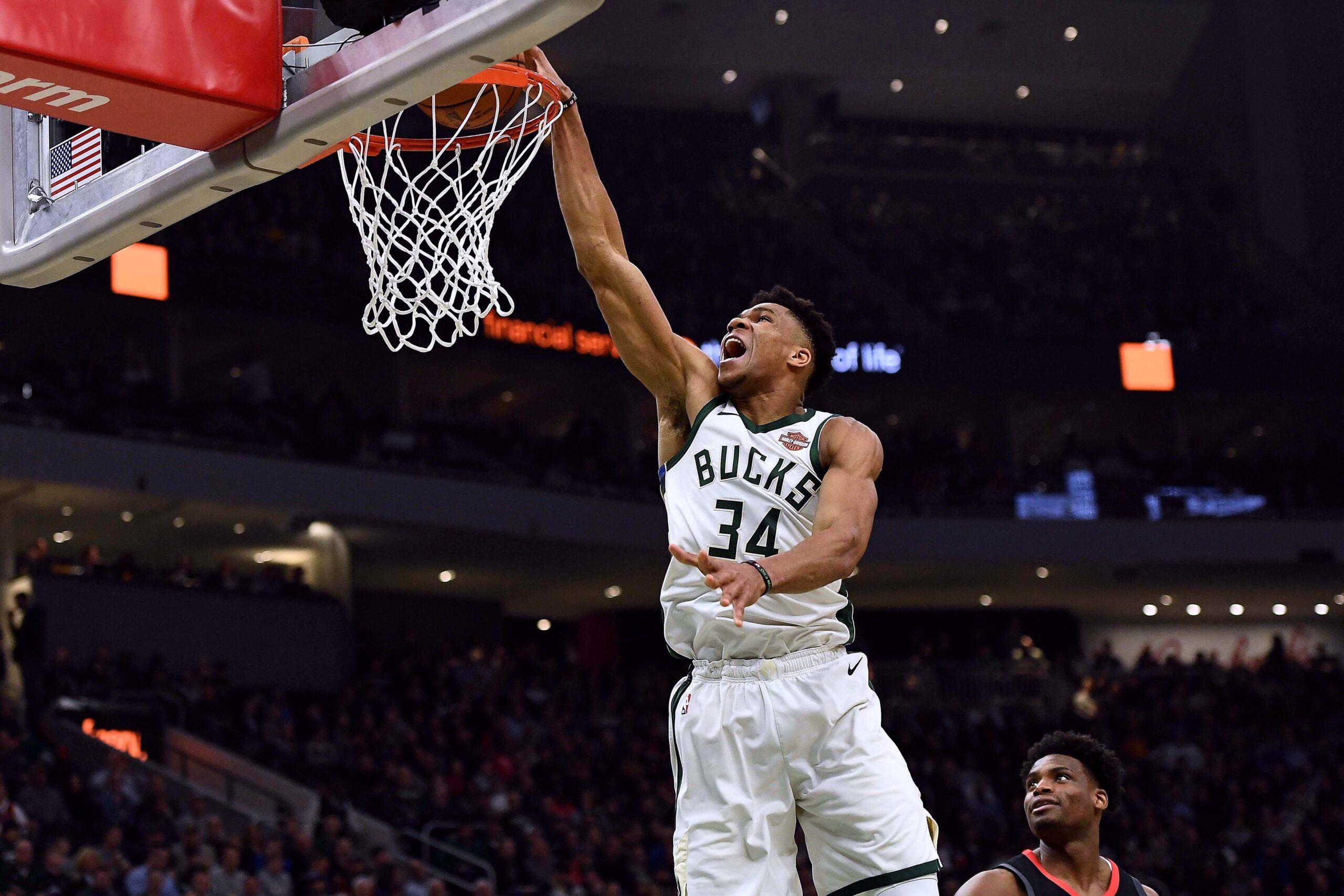
As with the top two, your mileage may vary on the final three; there are a ton of worthy candidates. Despite Oklahoma City’s late-season slide down the standings, I kept George in third place in recognition of the remarkable new heights he reached as a two-way force in his ninth season: a career-high 28.1 points, 8.1 rebounds, 4.1 assists, and a league-leading 2.2 steals per game, with more 3-point makes than anybody but Harden and Stephen Curry, while serving as the premier perimeter stopper on the NBA’s no. 3 defense and earning a central role on what is no longer just Russell Westbrook’s team. According to Cleaning the Glass’s on-court/off-court efficiency leaderboard—which is intended to identify which players have the biggest statistical impact on how their teams perform—George has the league’s largest differential among players to log at least 2,000 minutes this season.
The only big-minutes player close to George on that list? Stephen Curry, whom I thought hard about getting into the top five, especially since the midseason “he’s missed too many games” caveat has melted away. The two-time MVP will finish with between 68 and 70 appearances, and more than 2,300 total minutes, putting him well within acceptable boundaries for recognition of how fantastic he’s been: 27.6 points, 5.4 rebounds, and 5.3 assists in 34.1 minutes per game, 47/44/92 shooting splits on a career-high 11.9 3-point attempts per game, and a real plus-minus mark that trails only Harden, George, and Giannis.
But while Golden State is very clearly at its best when Curry’s at the controls of Steve Kerr’s symphony of organized chaos, the Warriors’ run to the West’s best record and the league’s second-best efficiency differential also benefited from their abundance of riches. For that reason, I wound up dropping both Curry and Kevin Durant out of my top five, in favor of players who, more broadly, produced nearly as much surrounded by significantly less megawatt talent.
The Nuggets might not finish with the West’s no. 2 seed after all—they enter Tuesday’s action just a half-game ahead of Houston, after a perhaps-too-clever-by-half loss to Portland on Sunday—but they’ve been one of the league’s best and most interesting teams all season long, and Jokic, the Goliath point center, is the big beating heart at the center of all of it. Denver won 50 games for the first time in a half-dozen years, without a second All-Star, on the strength of the fluid and fantastic offense that Jokic orchestrates more adeptly than any big man we’ve ever seen.
Ask me which center I’d rather have in one individual game, and my answer would probably be Joel Embiid, who’s a similarly unbelievable offensive talent and who can also change the game on the defensive end to a degree that Jokic can’t match. Ask me which one I’d have rather had over the course of this full season, though—one in which Jokic has played 14 more games and logged some 300 more minutes than the Sixers star, and in which he lands behind only Harden and Giannis in value over replacement player—and I’m going with the Serbian.
Lillard’s inclusion stems from a similar argument. He hasn’t scored as much or shot the ball as efficiently overall as Curry, Durant, or Embiid. But he’s been remarkably productive with a huge workload as the maestro of the NBA’s no. 4 offense and an absolute rock for a team and a franchise that has needed a stabilizing force at multiple points throughout this season. In a vacuum, Lillard isn’t as good as the three guys he’s bumping down the list. But this is a season in which the Blazers could absolutely have fallen apart after last spring’s devastating playoff sweep at the hands of the Pelicans; instead, they’ve won 51 games and posted a top-six net rating thanks largely to the work Lillard’s put in.
Just missing the cut: Curry, Durant, Embiid. I have a stomachache. (Shouts to Chidi.)
Defensive Player of the Year
1. Giannis Antetokounmpo, Bucks
2. Rudy Gobert, Jazz
3. Joel Embiid, 76ers
Antetokounmpo doesn’t look quite like the DPOY winners of years past. He’s not his team’s primary rim protector; that’d be Brook Lopez, who leads the Bucks (and ranks third in the NBA) with 179 blocked shots and has held opponents to 52.6 percent shooting on attempts at the basket, seventh best out of 46 players to play 10 or more games this season and defend at least four such attempts a night. Nor does he lead Milwaukee in steals or deflections. (Hey there, Eric Bledsoe.) And while he can guard the opponent’s best player—when Milwaukee faced Detroit, for example, he spent the bulk of his time matched up with All-Star forward Blake Griffin—he more frequently doesn’t, sticking with his positional matchup even if it’s not the gravest threat to the Bucks’ well-being, confident that with Lopez at the rim, Bledsoe and (when healthy) Malcolm Brogdon at the tip of the spear, and Khris Middleton draping the wing, Milwaukee’s first line of defense will remain sound.
All of that only works, though, because Antetokounmpo is the most terrifying help defender in the league. He’s a force multiplier who emboldens perimeter players to take another step up on their marks and allows Lopez to stay planted in the paint because he can occupy the space between and get anywhere he needs to be with two strides and a reach. It’s like when it came time to decide what areas of development he wanted to focus on last summer, he said, “I think I’m actually good on the jumper; how about learning how to navigate wormholes instead?”
That capacity to seemingly instantly materialize in an opponent’s path has made Giannis one of the sport’s most disruptive defenders; he and Andre Drummond are the only two players in the league this season to log at least 100 blocks and 90 steals. Opponents’ field goal accuracy drops by 6.6 percent when he’s defending, one of the biggest margins in the league. The Bucks defense, second in the league in points allowed per non-garbage-time possession, concedes 5.1 fewer points-per-100 when he’s on the floor than when he’s off it.
Gobert is no less impactful. He is the NBA’s leader in defensive real plus-minus and the funnel-everything-into-the-all-devouring-void star at the heart of the league’s best defense that has fueled Utah’s rise up the standings in the second half. That the 7-foot-1 Frenchman’s on/off numbers aren’t nearly as stark this season as in years past—the Jazz have allowed just 0.6 more points-per-100 in non-Rudy minutes this season, a significant change from previous campaigns—is less an indication of flagging impact on his part than reason to praise how great Derrick Favors has been as his primary backup at the 5 spot. (Opponents are shooting a microscopic 49.9 percent at the rim against Favors, best in the league among players who defend at least four at-rim attempts a game.) Gobert, like Antetokounmpo, is flanked by big, long, aggressive, and smart defenders in Utah. But it’s his ability to lock down the front of the rim and the confidence he inspires in those teammates to play aggressively up top that consistently keep the Jazz among the NBA’s best defenses.
Like Gobert, Embiid dissuades opponents from pursuing shots near the basket and dismisses them with extreme prejudice like few other big men in the league. He’s got all the tools to check smaller and quicker ball handlers in space—just ask Kyrie Irving—though fatigue and a commitment to retreating in the Sixers’ drop-back scheme can sometimes hamper his effectiveness as a pick-and-roll defender against rise-and-fire types willing to pull up at a moment’s notice. But while the 76ers are not one of the league’s best defenses this season, ranking a comparatively pedestrian 12th in points allowed per possession, that changes when Embiid’s on the floor; in his minutes, Philly allows just 106.3 points-per-100, which would slot in just behind Utah and Milwaukee over the course of the full season.
I wouldn’t bat an eye if Gobert repeated or Embiid got the hardware to match his own hype. But what can I say? I found Danny Chau’s argument for Giannis’s versatility really compelling.
Just missing the cut: Myles Turner, Paul George.
Rookie of the Year
1. Luka Doncic, Mavericks
2. Trae Young, Hawks
3. Deandre Ayton, Suns
That I even had to think twice about the order here is a testament to just how productive and engrossing Young has been over the last three months. The Oklahoma product is already a near-elite NBA passer and playmaker, one whose fabled deep 3-point shot has come around after a cold start (36.7 percent from long distance since February 1) and who has helped both accelerate the Hawks’ rebuild and make them really fun to watch.
But while Young’s been the brighter young thing in the second half, Doncic remains the pick. Faced with the seemingly insurmountable challenge of living up to the hype as the most decorated young European prospect ever to cross over to our shores, the Slovenian point forward instantly established himself as a playmaker of note and a centerpiece for a franchise that will soon be bidding farewell to its previous international savior.
Even after a post-trade-deadline cold snap—just 40.8 percent from the field and 27.4 percent from the 3-point arc since Dallas traded away the other four of its top-five minutes-getters—Doncic leads the rookie class in VORP and trails only Knicks shot-eraser Mitchell Robinson in box plus-minus. He’s posted higher true shooting and effective field goal percentages than Young and has gotten to the free throw line much more frequently. While neither has exactly set the world on fire with his defensive work, Doncic has been more versatile and less of a liability than Young thanks to his size and strength advantages.
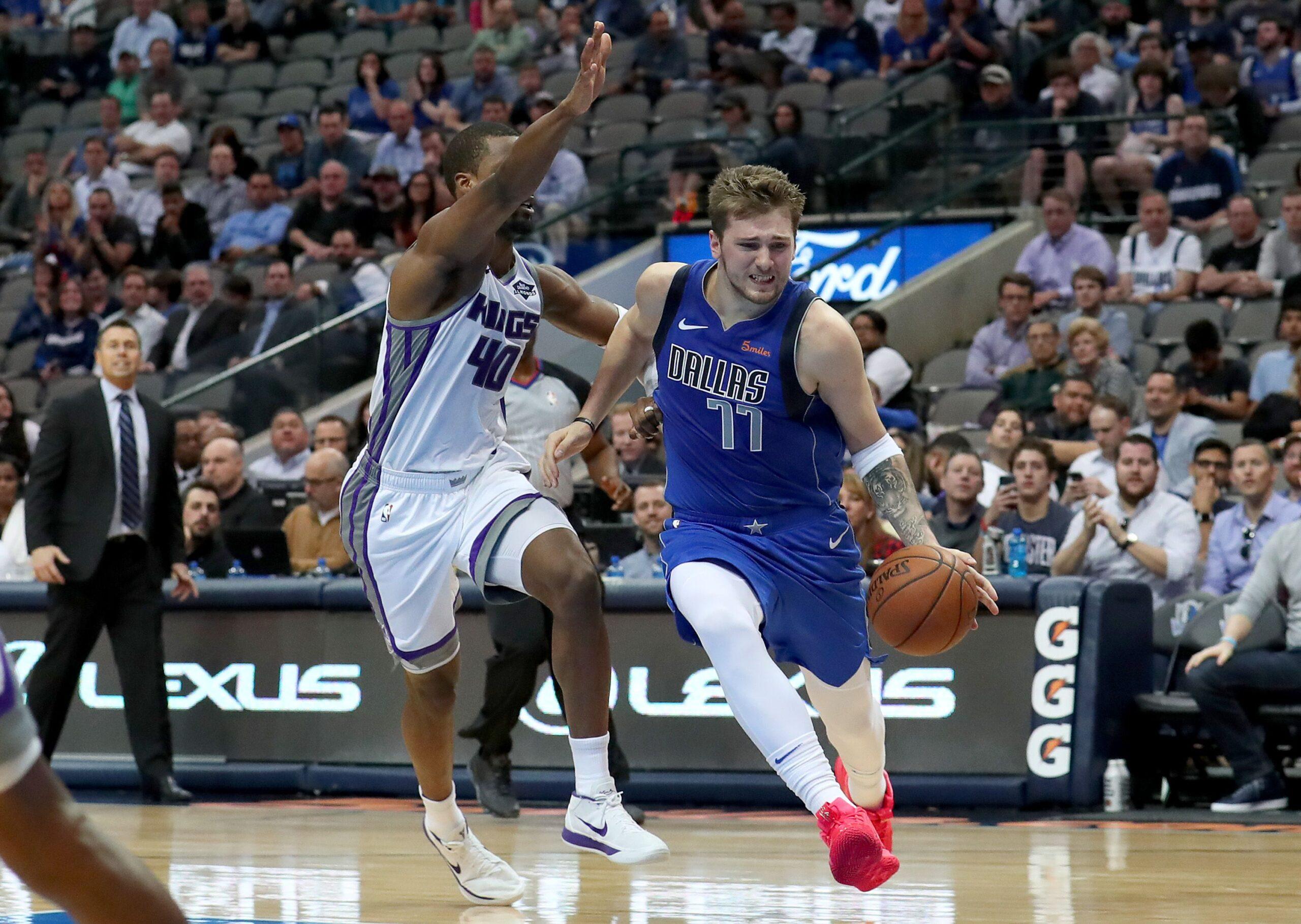
Ayton, meanwhile, has been essentially as advertised for a terrible Phoenix team: an instant high-quality interior scorer and rebounder, an effective source of buckets near the basket with soft hands and a smooth midrange stroke, and a very-much-in-progress defender at the position where being a negative matters more than any other in the NBA. Given some perimeter defenders actually capable of stalling dribble penetration at the point of attack and a steady point guard who can throw an entry pass and spoon-feed him some quality looks, Ayton might yet develop into the star the Suns hoped he’d be when they drafted him first overall. At the moment, though, he’s behind in that race, trailing two gunslinging guards tailor-made for the direction the NBA is going.
Just missing the cut: I think these are the main three, but shouts out to Jaren Jackson Jr., Shai Gilgeous-Alexander, Landry Shamet, and Robinson.
Coach of the Year
1. Mike Budenholzer, Bucks
2. Doc Rivers, Clippers
3. Nate McMillan, Pacers
Rivers has received a lot of praise for guiding the Clippers through several waves of roster upheaval, giving them a new identity as egoless grinders who overwhelm opponents with depth, and getting them all the way to the postseason in a crowded West; he deserves it all. There hasn’t been as much attention paid to the job McMillan has done to keep the Pacers afloat since Victor Oladipo’s season-ending knee injury. (You’re not going to believe this, but what happens in Indiana doesn’t get quite as much press as what happens in L.A.) But it’s borderline miraculous that McMillan managed to coax a middle-of-the-road net rating out of Turner’s rim protection, Bojan Bogdanovic’s shot creation, Thaddeus Young’s fill-in-the-blanks game, and the half-game heroism of Domantas Sabonis. But with all due respect to Rivers’s and McMillan’s fine work, this is probably going to be a pretty easy pick for a lot of people.
As I wrote last month, the surest path to the top of the coaching ballot is to preside over a team that wins more games than anybody else or takes a massive jump in win total or, ideally, both. After instituting the schematic shifts that unleashed Antetokounmpo and further weaponized the likes of Lopez, Bledsoe, Middleton, and Brogdon, Coach Bud nails the twofer: Milwaukee has won 16 more games than last season—tied with the surprising Orlando Magic for the biggest year-over-year leap in the W column—to sew up the East’s no. 1 seed, the NBA’s best record, and the franchise’s first 60-win campaign since 1980-81. The players pushed the Bucks to new heights. But Budenholzer, with a fresh set of eyes and a new plan of attack, charted the course for them to get there.
Just missing the cut: Orlando’s Steve Clifford, Brooklyn’s Kenny Atkinson, Denver’s Michael Malone, Portland’s Terry Stotts.
Most Improved Player
1. Pascal Siakam, Raptors
2. D’Angelo Russell, Nets
3. De’Aaron Fox, Kings
I’ve spilled a lot of digital ink this season on Siakam, Russell, and Fox, all of whom have taken significant steps forward that could help define the futures of their respective franchises. Fox’s quantum leap as a shot-maker and leader in his sophomore season got the Kings closer to the postseason than they’ve been in 13 seasons. Russell’s development as a midrange monster and needle-threading pick-and-roll facilitator made him an unlikely All-Star—just in time for restricted free agency!—and helped get the Nets into the playoffs for the first time in the Sean Marks–Kenny Atkinson era. Both young point guards have injected a level of excitement into their teams’ fan bases that’s been missing in recent years, allowing fans of little-brother franchises on each coast to start dreaming of brighter days to come.
But Russell, picked second overall in 2015, and Fox, chosen with 2017’s fifth pick, were marked for playmaking greatness in high school; they deserve all the credit in the world for making the jump, but to some degree, this is who they were always supposed to be. Siakam, though? The “Cameroonian kid who didn’t start playing organized basketball until he was nearly 18”? The guy who played in the WAC rather than a Power 5 conference, went 27th overall in 2016, and averaged six points and four rebounds per game through his first two pro seasons? Nobody knew he’d turn into this.
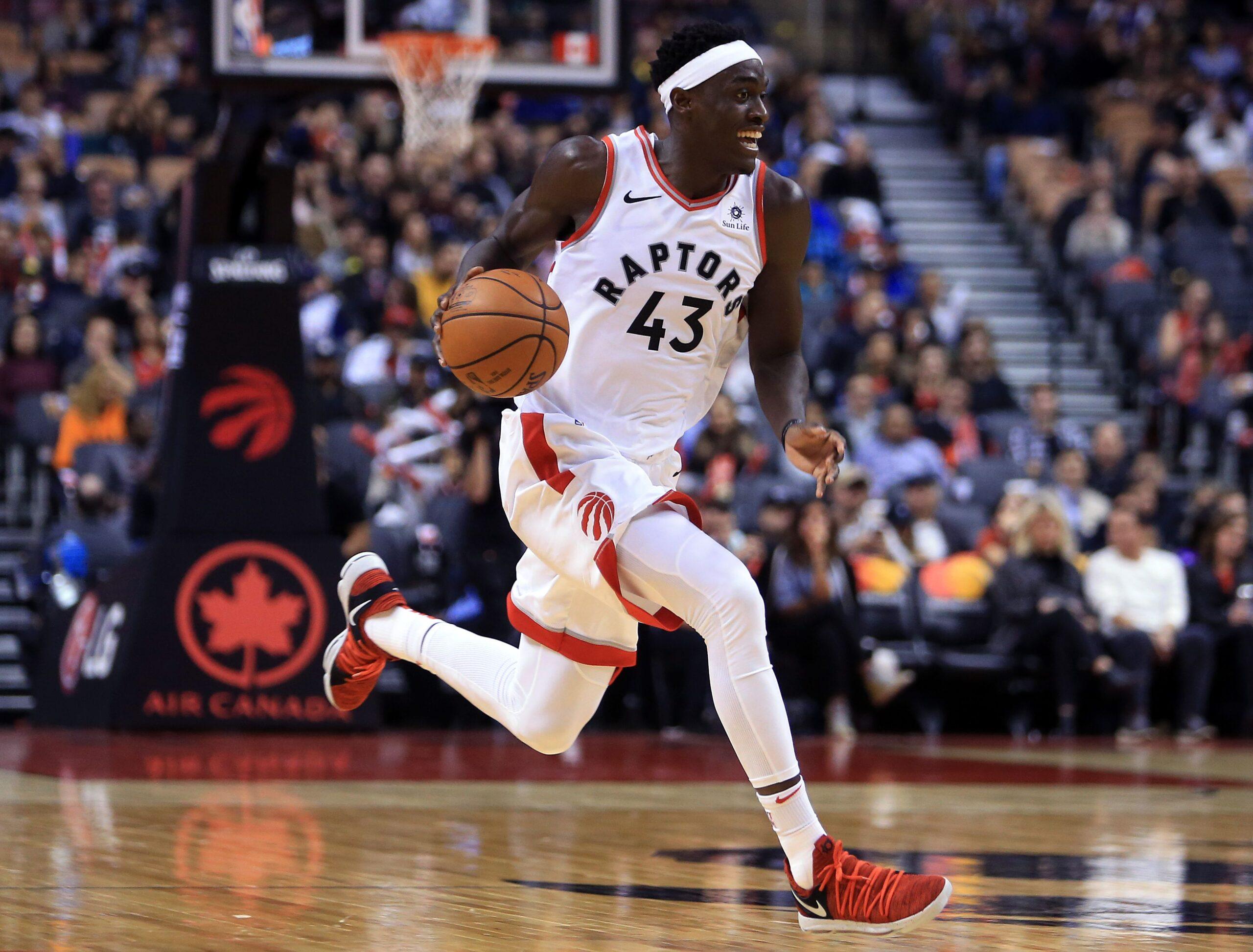
Siakam’s averaging 17 points per game on sparkling 55/37/79 shooting splits to go with 6.9 rebounds and 3.1 assists a night. With established stars Kawhi Leonard and Kyle Lowry in and out of the lineup, Siakam has been the most consistent two-way contributor on a 57-win team with championship aspirations. The hustle god who couldn’t shoot at New Mexico State is now an increasingly confident off-the-dribble creator who can spin his way to a clean look against just about any opponent. That advancing offensive game hasn’t taken any of the bite out of his defensive work; Siakam guards all five positions, often guards the opposition’s most dangerous option, and does it all really, really well. He’s become Toronto’s not-so-secret-anymore weapon right before our eyes. Whether he can keep this up under the bright lights of the postseason is the $64,000 question. That we’ve even reached the point where a Raptors playoff opponent will have to game-plan around Siakam on the offensive end underscores just how far he’s come.
Just missing the cut: Domantas Sabonis, Nikola Vucevic, Buddy Hield.
Sixth Man of the Year
1. Lou Williams, Clippers
2. Montrezl Harrell, Clippers
3. Domantas Sabonis, Pacers
I know, I know: Sixth Man of the Year always seems to go to whichever dude scores the most points without starting a bunch of games, irrespective of efficiency or defensive impact or any of the many other ways a backup might make his team better. But Williams isn’t the pick just because he leads all second-unit players in points. (Although, y’know, he does.) No, it’s because—with apologies to Danilo Gallinari, who has been really good this season—Williams is the offensive heartbeat of the depth-over-everything Clippers. He leads the team in scoring and assists, despite playing just 26.6 minutes per game; the Clips score 7.2 more points per 100 possessions with Williams running the show, the second-biggest differential on the team after Shamet, a trade-deadline acquisition. For a team that wins on the strength of its top-10 offense, Williams’s breezy swaggering around high screens toward the hoop isn’t just fun. It’s foundational.
While getting buckets will always be Lou’s forte, he’s also become one of the game’s savviest and smoothest pick-and-roll playmakers. He’s notched the assist on 33.2 percent of his teammates’ baskets while he’s on the court, a career high and the top assist percentage of any qualifying reserve this season. No bench mobber has created more points by assist per game than Williams, who keeps lulling defenders to sleep with that left-hand dribble and then delivering a rude awakening, especially late in games; only Harden has scored more points in the fourth quarter than Williams, and nobody has a higher plus-minus in the final five minutes of contests in which the score’s within five points.
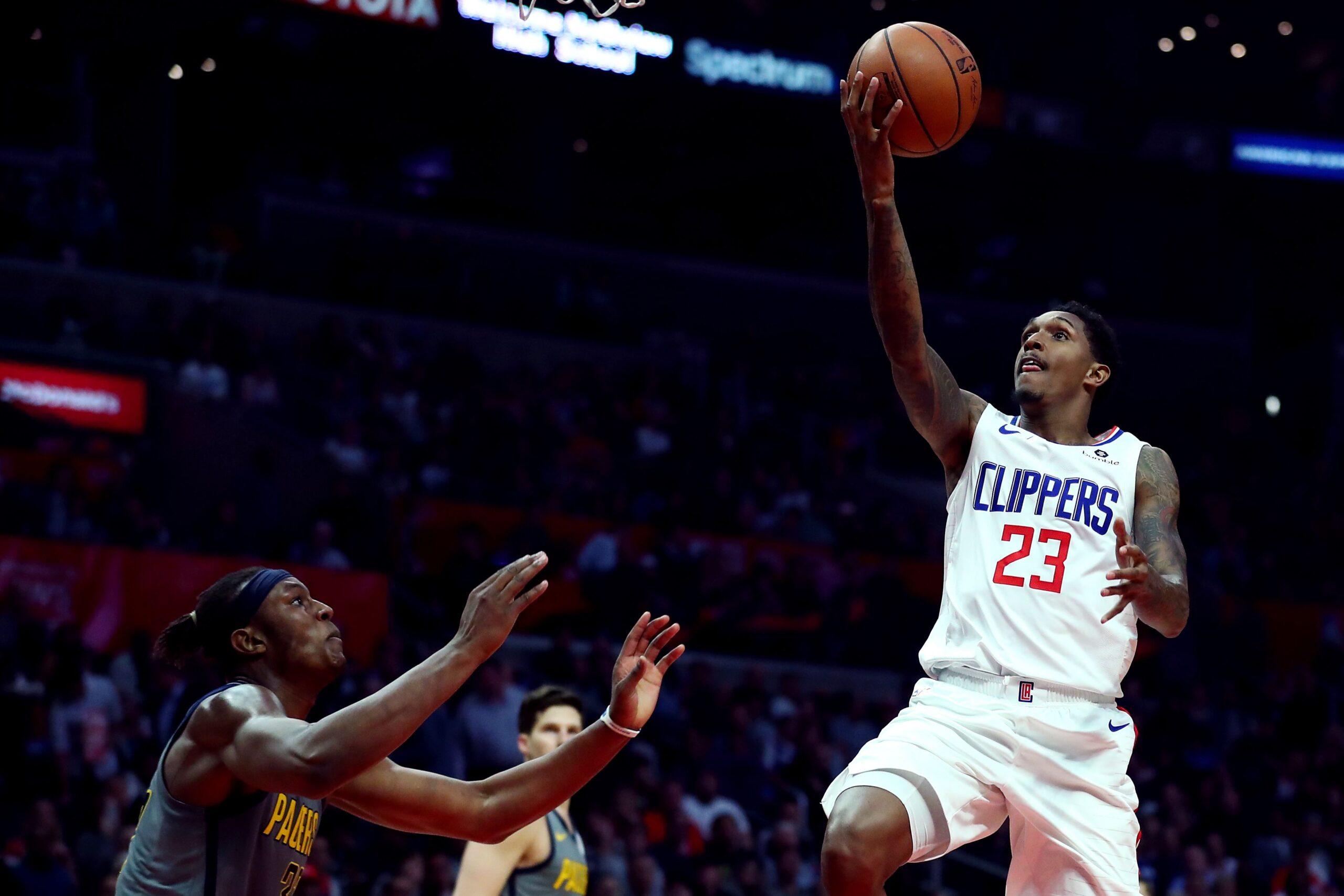
Disentangling Williams’s contributions from those of high-screen partner Harrell is tough; as ESPN’s Zach Lowe recently noted, Williams targets Harrell with his feeds far more than any other teammate. With good reason: The 25-year-old bruiser is shooting 70.6 percent inside the restricted area, 10th in the NBA among players who take five such attempts per game, and has scored the fourth-most points in the league as a roll man after setting a screen, according to Synergy Sports Technology’s game-charting data. The fourth-year pro has also grown as a playmaker on the roll—157 assists this season, more than in his first three combined—and keeps his motor cranked up on defense, too. Through activity, aggression, and athleticism, Harrell has overcome his size disadvantage as a 6-foot-8, 240-pound small-ball center to help fuel the Clippers’ surprise run to the postseason.
And Sabonis? Two seasons removed from his tentative rookie run in Oklahoma City, during which he was miscast as a spot-up shooter expected to feast off Russell Westbrook kickouts, the Pacers big man emerged this season as one of the league’s most ferocious and skilled interior scorers for an Indiana team desperate for offensive pop. He’s a monster screen setter and rebounder, a canny passer (albeit more prone to turnovers than Harrell), and a gleeful mauler all too happy to do the bulk of his work from the elbows and in—perfect for a Pacers team that, without Oladipo, has had to grind out possessions and win ugly.
Just missing the cut: Ed Davis, Spencer Dinwiddie, Terrence Ross, Monte Morris, Andre Iguodala, the entire bombs-away Spurs second unit. ... There have been a lot of really, really good reserves this year.
Executive of the Year
1. Masai Ujiri, Raptors
2. Jon Horst, Bucks
3. Lawrence Frank, Clippers
This is the only major year-end award that media members don’t vote on; instead, executives from the league’s 30 teams cast ballots. I’m cool with that. I tend to subscribe to Kelly Dwyer’s notion that it’s pretty tough to gauge the performance of a general manager or president of basketball operations on a year-to-year basis, when each team’s front office is operating on a different timetable for a different reason. But, since we’re here, let’s go with Ujiri, the big-thinking boss who rebounded from last season’s crushing defeat against Cleveland by turning a very good shooting guard (DeMar DeRozan) and a solid but unremarkable big man (Jakob Poeltl) into an MVP-caliber two-way difference maker (Kawhi Leonard) and a better-fitting shooting guard who has quickly become indispensable (Danny Green).
Ujiri saw an opportunity—one that would require jettisoning a franchise icon, yes, but an opportunity all the same—and he took it. He raised his team’s ceiling, giving Toronto a better chance to compete for a championship this season (and, if he can convince Kawhi to re-up this summer, possibly beyond). Crucially, he also did it without sacrificing future financial flexibility or any of the Raptors’ best young trade assets (Siakam, OG Anunoby, Fred VanVleet). Whether his midseason moves to import Marc Gasol and Jeremy Lin will bear postseason fruit remains to be seen, but things seem to be trending in a positive direction—the Raptors could still level up now that Kawhi doesn’t have to rest on the second half of back-to-backs anymore.
Horst gets a nod for making the moves in Milwaukee—hiring Bud to helm an extreme stylistic makeover; signing Lopez, Ersan Ilyasova, and Pat Connaughton to surround Giannis with shooting—that accelerated the Bucks’ transformation into a juggernaut. Frank earns a spot for leading a revamped Clippers front office that dealt for ace rookie point guard Shai Gilgeous-Alexander on the night of the 2018 draft; came away from the trade deadline with two new starters (Shamet and center Ivica Zubac), two new rotation reserves (Garrett Temple and JaMychal Green), two future first-round picks—including the Miami Heat’s unprotected 2021 first-rounder—and two future second-round choices; and somehow improved this season’s team (the league’s fifth-best record since the All-Star break) without hindering this summer’s planned pursuit of maximum-salaried free agents. We’ll see if any of the big fish bite, but if nothing else, Frank and Co. have given the Clippers multiple paths to building a winner in the future while actually winning in the present.
